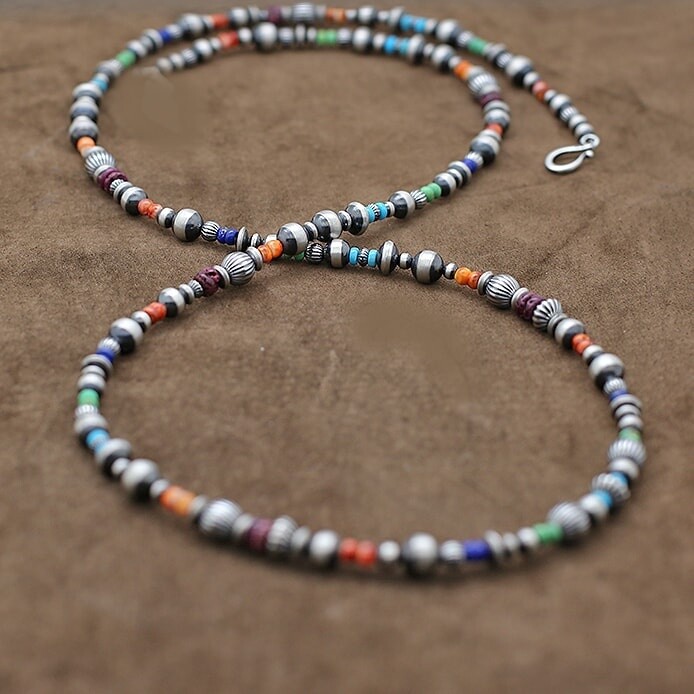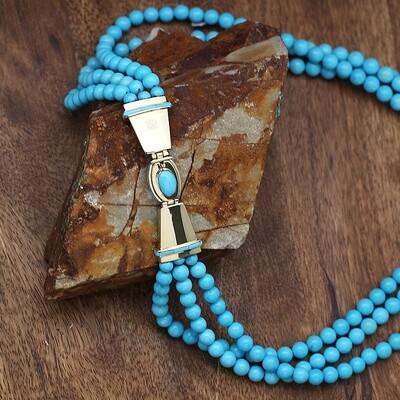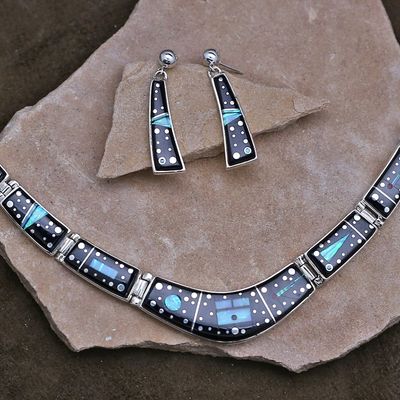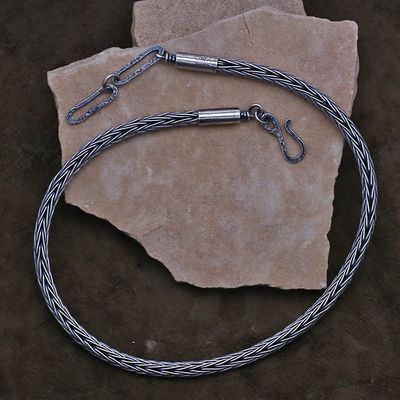36" Multi-Color beaded necklace
36″ Multi-Color beads with sterling silver Navajo Pearls Sterling silver. These Multi-Color beads are 1/2 the size of our large necklaces of the same style and as a result have a much softer feel. he largest sterling silver bead is only 8 mm and taper down to 3 mm. Colorful stones allow this necklace to be worn with any combination of jewelry.
Kingman Turquoise (BLUE) : originates in the Mineral Park Mining District near Kingman, Arizona. One of the largest domestic turquoise mines, it is found in a large open pit copper mine in the high desert country. The Kingman Mine district was first mined by Native Americans; it was part of the most extensive prehistoric workings in Arizona.
Lapis Lazuli :(DARK BLUE) Mines in northeast Afghanistan continue to be a major source of lapis lazuli. Important amounts are also produced from mines west of Lake Baikal in Russia, and in the Andes mountains in Chile. Smaller quantities are mined in Pakistan, Italy, Mongolia, the United States, and Canada.It is a stone prized for its intense blue color. The name Lapis Lazuli comes from the Arabic word lazward, from which the word azure comes, which means blue.
Spiny Oyster Shell:(ORANGE,RED & PURPLE) Living Spondylus shells are, indeed, very spiny, but the polished product looks very smooth, with some of its color variation strongly resembling that of the Blood Oyster. Although not nearly as rare as the Blood Coral or Rose Coral, divers collect Spiny Oyster by hand, making the work laborious and relatively expensive, with some risks. In the American Oceans, the Spondylids occur along the North American coasts, as far north as North Carolina, on the Atlantic Coast, and northwestern Mexico, on the Pacific Coast. It develops in waters to South America. The Orange Spiny Oyster occurs in shallow to moderately deep waters, where snorkelers and scuba divers readily harvest them. Purple Spiny Oysters grow in deeper water, making them more difficult to find and harvest.
Royston :(GREEN ) is a district in Nevada consisting of three turquoise mines: Bunker Hill, Oscar Wehrend, and the main producer, The Royal Blue. Royston is known for its beautiful colors ranging from deep green to rich, light blues which are set off by a heavy brown matrix.
Gaspeite: Named after its original location of discovery (the Gaspé Peninsula of Quebec, Canada), gaspeite is a bright yellow to apple green color with brownish veining. It was originally considered only a gangue mineral–a stone which contains a metal ore in its makeup, but that metal cannot be viably extracted from it.






